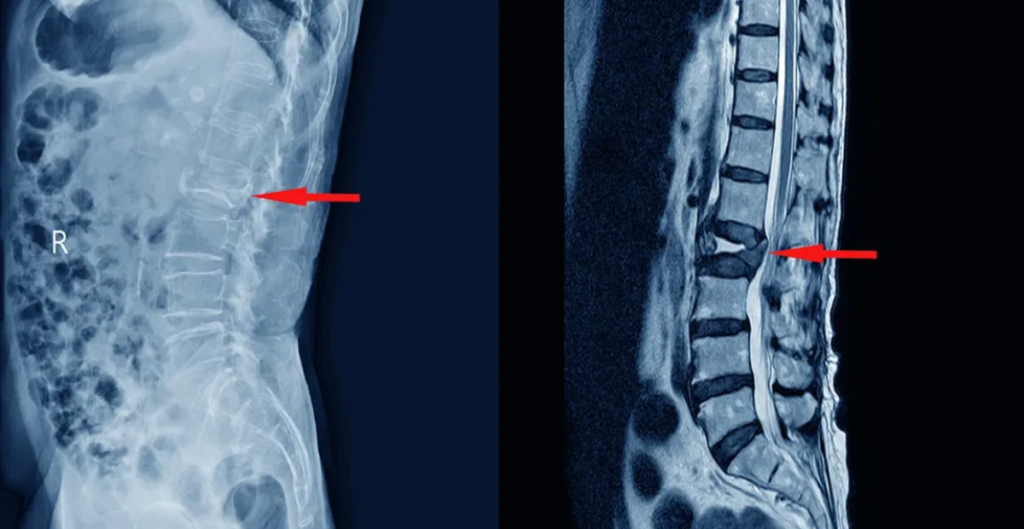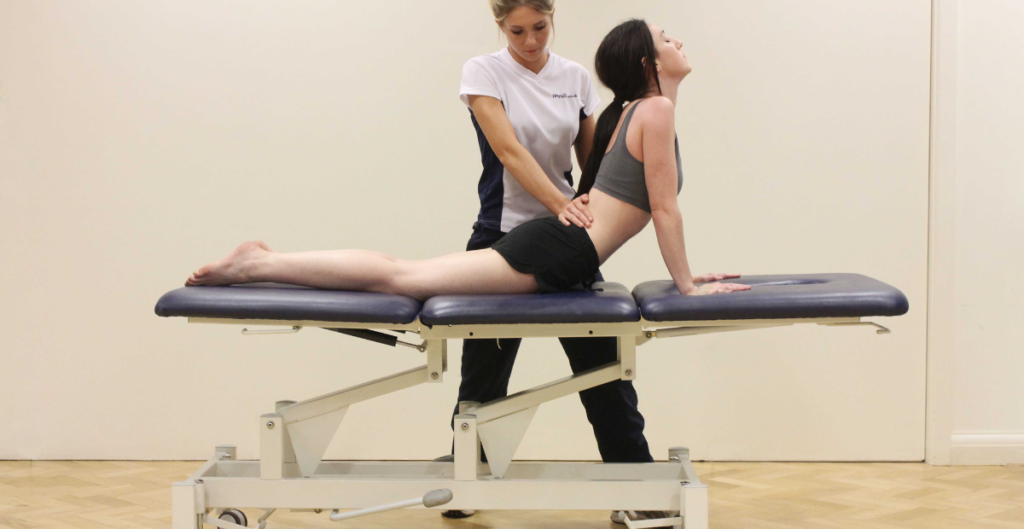How Long Does It Take for a Chiropractor to Fix a Bulging Disc?
For anybody with back pain or related symptoms, knowing how long it takes a chiropractor to treat a bulging disk might be crucial. Whether you are considering having chiropractic therapy or are currently receiving treatment, it is crucial to set realistic goals for the healing process. This comprehensive guide will address many elements of using chiropractic therapy to treat a bulging disc, such as how to expedite healing and what factors influence recovery time.
What is Bulging Disc?
A bulging disc occurs when the soft, gel-like inner layer of a spinal disc pushes through the outer layer. This condition is also known as a protruding or ruptured disc. This protrusion may compress nearby nerves, resulting in discomfort, weakness, or numbness in different body parts. The disease mostly affects the lumbar spine in the lower back, however it can also affect the cervical spine.
Why Chiropractic Care is Considered
Chiropractic care is a popular choice for individuals seeking relief from a bulging disc without resorting to surgery. Chiropractors use manual techniques to adjust the spine, aiming to reduce nerve pressure, improve alignment, and promote natural healing. By addressing the root cause of the pain, chiropractic care can provide both symptomatic relief and long-term benefits.
Understanding Bulging Discs
Bulging discs, also known as bulging intervertebral disks, occur when a spinal disc protrudes beyond normal limits as a result of pressure from the harder outer structure pressing on the soft inner material of the disc. The lumbar and cervical regions of the neck are the most frequently afflicted, however it can occur anywhere along the spinal column.
Causes and Symptoms
Acute injuries, age-related degeneration, and repeated stress are some of the causes of bulging discs. The discs in our spine become less flexible and have less water in them as we age, which increases the likelihood of their bulging. Depending on where and how severe it is, a bulging disc can cause a variety of symptoms, but typical ones include:
- Localized pain: Pain in the back or neck that is localized and can be either dull or acute.
- Radiating Pain: Often referred to as lower back sciatica, this type of pain radiates to the arms or legs.
- Numbness and Tingling: Feelings of numbness or tingling in the limbs.
- Weakness: The affected areas’ muscles are weak.
How Bulging Discs Affect the Body
Many symptoms might result from the surrounding spinal nerves being compressed by the protruding disc material. For example, sciatic nerve damage from a bulging disc in the lower back might cause discomfort down the leg. On the other hand, a protruding disc in the neck might affect the nerves that supply the arms, causing discomfort or paralysis in the upper limbs.

Role of Chiropractic Care
Most musculoskeletal conditions, including bulging discs, are treated by chiropractors.
What Chiropractors Do
Chiropractors such as pediatric chiropractors and scoliosis chiropractors employ a variety of techniques to correct spinal misalignments and improve function overall. The major objective is to straighten the spine and reduce whiplash stiffness, both of which can reduce pain.
Techniques Used in Chiropractic Care
Chiropractors employ several techniques to treat a bulging disc, including:
- Spinal Adjustments: Manual manipulation of the spine may be by a joint chiropractor to realign vertebrae and reduce pressure on nerves.
- Manual Therapy: Techniques such as massage or stretching to relax muscles and improve mobility.
- Exercise Therapy: Tailored exercises to strengthen the muscles supporting the spine and enhance flexibility.
- Lifestyle Advice: Recommendations on posture, ergonomics, and activities to support spinal health.
Factors Influencing Recovery Time
These are some factors that influence recovery time:
Severity of the Bulging Disc
The duration of healing depends in a significant way on how severe the bulging disc is. Chiropractic therapy is frequently effective in treating minor bulges that cause little nerve compression, and results can appear in just a couple of weeks. On the other hand, more serious bulges with significant levels of nerve involvement may demand a lengthier course of treatment—possibly several months.
Patient’s Overall Health
The general health and physical state of a patient might affect how long they recover. People who have always been well and physically active could heal faster than those who have sedentary lives or pre-existing medical conditions. When a patient is healthy, chiropractic therapy facilitates the body’s own healing processes and performs better.
Lifestyle and Activity Levels
Recovery can be enhanced by engaging in activities that promote spinal health, such as consistent exercise and good posture. Furthermore, improper training that puts excessive pressure on the neck or back can exacerbate symptoms and prolong the healing process. Adopting a healthy lifestyle and heeding the chiropractor’s advice are essential for the best possible healing.
Compliance with Treatment Plans
Making yourself consistent with the chiropractor’s treatment plan, including attending listed sessions and performing prescribed exercises, is essential for achieving the desired results. Non-compliance with the recommended plan can delay recovery and reduce the effectiveness of treatment.
Typical Treatment Duration
There are three phases of treatment which are explained below:
Initial Phase: Assessment and Acute Care
The original phase of chiropractic treatment involves assessing the patient’s condition and addressing acute symptoms. During this period, the chiropractor may concentrate on reducing pain and inflammation through spinal adaptations and other ways. This phase generally lasts many weeks, depending on the inflexibility of the bulge and the patient’s response to treatment.
Intermediate Phase: Rehabilitation and Strengthening
Once acute symptoms have been managed, the focus shifts to recuperation. This phase involves exercises and curatives designed to strengthen the muscles supporting the spine, ameliorate inflexibility, and help unborn issues. The duration of this phase can vary but frequently lasts several weeks to months, depending on the patient’s progress.
Long-Term Maintenance
After the original and intermediate phases, ongoing care may be necessary to maintain spinal health and help recurrence of symptoms. This may involve periodic chiropractic adaptations, life variations, and continued exercise. Long- term maintenance is essential for achieving lasting benefits and overall spinal well- being.

Expectations from Chiropractic Treatment
When you want to receive chiropractic care for issues like bulging discs, you should always have realistic expectations.
Short-Term Relief
Numerous cases witness significant relief from pain and discomfort shortly after starting chiropractic treatment. In order to enable patients return to their daily routines more easily, spinal modifications and other methods can provide rapid symptom alleviation.
Long-Term Benefits
In addition to short- term relief, chiropractic care offers long- term benefits similar to better spinal alignment, reduced threat of unborn injuries, and enhanced overall health. Harmonious care and adherence to recommended practices are crucial for achieving these benefits.
Managing Expectations
Even while chiropractic adjustments can be quite beneficial, it’s crucial to maintain reasonable expectations. Not all cases will result in the full remission of symptoms, and others may require different methods of therapy. Patients can maintain their motivation and commitment to their recovery plan by being aware of the hidden challenges.
Complementary Treatments
Complementary therapies are very effective for treating issues like bulging discs. Here are some of them:
Physical Therapy
In order to complement chiropractic therapy, physical therapists might focus on specific exercises and treatments meant to strengthen the back and improve function. Combining physical remedy with chiropractic care can enhance overall recovery and support long- term spinal health.
Medication and Pain Management
In some cases, drugs may be used to manage pain and inflammation, particularly during the original stages of treatment. Drugs can give temporary relief and support the effectiveness of chiropractic care.
Lifestyle Changes
Making life changes, similar to following a healthy diet, maintaining a healthy weight, and incorporating regular exercise, can support the mending process and enhance spinal health. Following the chiropractor’s advice on life variations can enhance overall recovery.
When to Seek Additional Medical Attention
When to seek further medical assistance is very important during chiropractic therapy.
Signs that Chiropractic Care Alone May Not Be Enough
Still, it may be necessary to seek fresh medical evaluation, If symptoms persist or worsen despite chiropractic treatment. Signs that chiropractic care alone may not be sufficient include severe pain, significant weakness, or loss of bowel or bladder control. These symptoms may indicate the need for further medical intervention.
Considering Other Medical Interventions
In cases where chiropractic care doesn’t give acceptable relief or if the bulging disk is severe, other medical interventions may be necessary. These interventions may include imaging studies, injections, or indeed surgical options, depending on the specific condition and case requirements.
Tips for Maximizing Recovery
Tips for maximizing recovery are as follows:
Staying Active
Engaging in applicable physical exercises, as advised by your chiropractor, can help maintain spinal health and help unborn issues. Regular exercise and movement are pivotal for supporting the recovery process and perfecting overall well- being.
Following the Chiropractor’s Advice
Following the chiropractor’s recommendations, including attending all listed movables and performing prescribed exercises, is vital for achieving the desired goals. Compliance with the treatment plan supports effective recovery and long- term spinal health.
Avoiding Activities that Exacerbate Pain
Avoiding activities that place overdue stress on the back or neck can help exacerbate symptoms and support the rehabilitation process. You should heed your chiropractor’s advice regarding modifications to your daily routine and which types of exercise to avoid.
Conclusion
The time it takes for a chiropractor to fix a bulging disk varies based on several factors, including the inflexibility of the condition, the case’s overall health, and their commitment to the treatment plan. Chiropractic care can give significant relief and long- term benefits, but recovery is a process that requires tolerance and adherence to the recommended plan. By understanding the factors impacting recovery and following the chiropractor’s advice, patients can enhance their chances of a successful outgrowth and achieve better spinal health.



